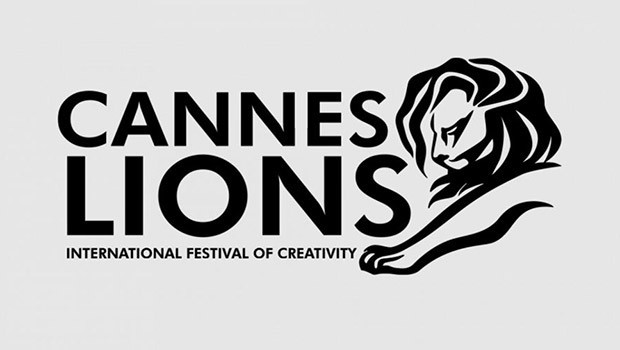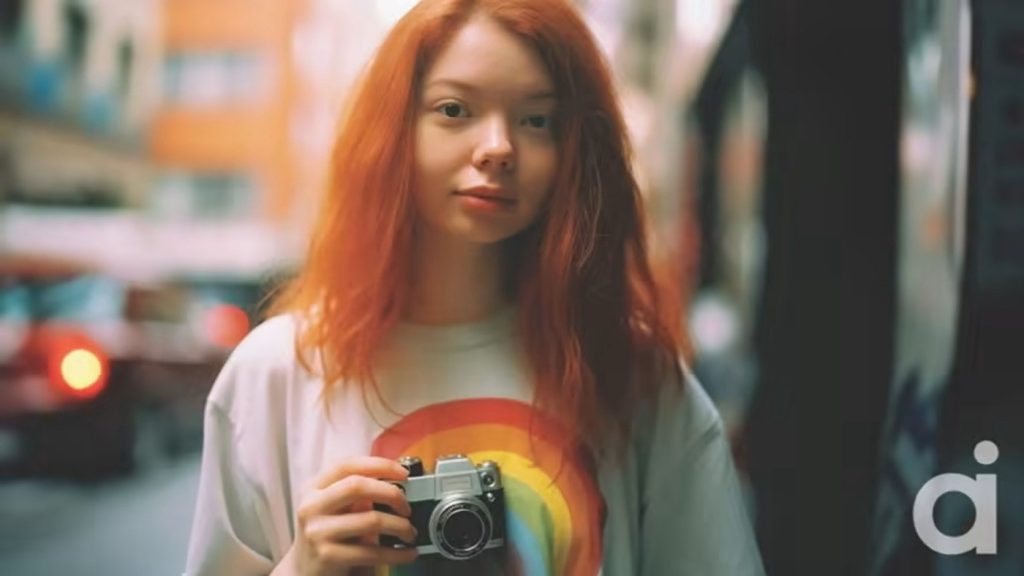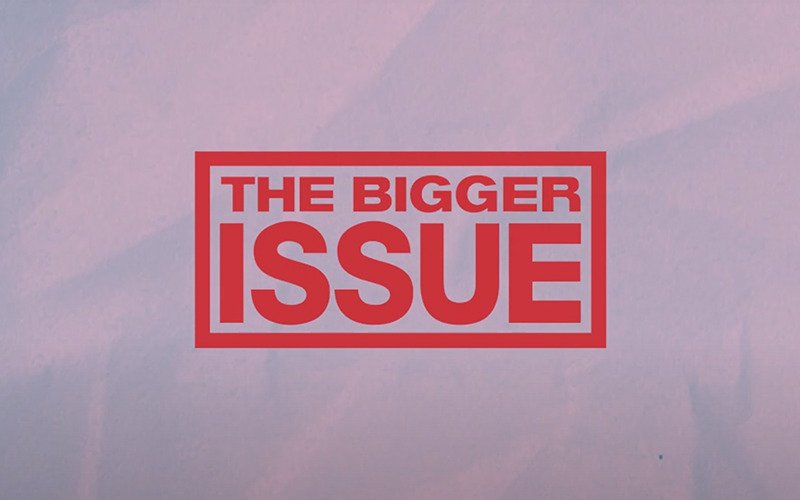Advertising agency Ogilvy is trying to push for more industry disclosure when lifelike virtual characters are used in ads, but it will be a struggle.


ABOVE: A sample advertisement from Ogilvy includes a ‘watermark’ denoting it was created with artificial intelligence
20 June 2023 (Cannes, France) — As I noted over the weekend, this is my last attendance at the Cannes Lions Festival of Creativity as I say good-bye to the conference/trade show circuit. Cannes Lions has always been my favorite event and I wanted to end my circuit here. This year I am flying solo with no crew or camera – not so much to cover the event as a reporter but to be just a regular attendee, to soak up some info, and network with old friends.
In my (somewhat long) piece over the weekend, I wrote about the value of this festival to the industries and ecosystems in which I have both worked and followed: advertising, digital technology, legal technology, media, mobile technology and software development. And this week, though I am more “tourist” than “reporter” I want to share a few conversations I have been having, most about generative AI, but also about other issues – all of which affect the industries I write about, and go beyond advertising and marketing.
Last night I was at the Brands VIP dinner where most of the big brands you know and love were cross-chatting about all the new AI technology that has surfaced over the last 3 years and how it was being used in the advertising industry. Reps from Ogilvy – one of the largest agencies for social media influencers – talked about the need for advertising agencies to sign up for an initiative to disclose when artificial intelligence is used in social media campaigns in response to concerns about the use of virtual but lifelike characters online. The company has set out plans for an AI accountability code for advertisers and social media platforms to clearly disclose and publicly declare AI-generated influencer campaigns. The agency has also committed to using a new AI “watermark” on its advertising (sample above). And the campaign has the backing of leading industry bodies and follows efforts to encourage influencers to disclose when they are using technology to alter their appearance. In a piece over this past weekend, Hannah Murphy (the reporter at the Financial Times who covers this industry) had interviewed Rob Newman, director of public affairs at the Incorporated Society of British Advertisers, who noted:
“The public deserves transparency, from it being clear when you’re being advertised to, to being sure that the voice doing the advertising is that of a real person.While still a new concept, there are a growing number of AI influencers that have amassed significant social media followings, in some cases in the millions. Thanks to rapid advances in AI, some are increasingly lifelike in their looks and how they interact with their followers. AI influencers can be designed by individuals who later pick up brand deals, or created and managed by brands and agencies as part of a marketing strategy. The Ogilvy campaign is one of a number of initiatives on AI that will be launched in Cannes this week, when tens of thousands of advertising and marketing executives will meet so it is a perfect place to get your message across”.
I’ve only been here for 2 days (and only 1-1/2 days of sessions) and the use of AI has been a dominant theme – on the presentation stages, the breakfasts, the parties, the bars, etc. The biggest concern: the threat many feel already to many jobs in the sector being turned over to AI such as automating the buying of advertising space and even carrying out creative work. All the AI heavyweights are here making pitches: Adobe, Apple, Amazon, Facebook, Google, Microsoft, and OpenAI.
Rahul Titus, global head of influence at Ogilvy, made a presentation this morning and he said:
‣ 3/4 of social media content are made by individual “creators”, but a rising proportion of these are AI-generated characters that can be presented as real
‣ the AI watermark would also benefit real-life social media influencers who he said rely on authenticity. Increasingly, “people buy people, not brands”, he said
‣ Ogilvy said it did not work with influencers who changed their images using body-distorting filters
‣ ultimately, Ogilvy wants marketers to disclose all AI-generated content, similar to the “paid partnership” tag used across the industry today to show where influencers have been paid to promote a brand
‣ the AI market is projected to grow by 26% by 2025, in large part because of the increase in using AI in influence operations
And in another session this morning, the obvious: creators are already beginning to reproduce themselves online as AI clones. These self-animating GPT-enabled synthetic creators can communicate in real time and at scale. This is tremendously exciting with near-limitless positive applications. It does, however, open the door to bad actors.
The reality is that agencies and marketers have been creating an alternate reality (and hence demand) forever, so I fail to see why or how an AI watermark will make a difference to consumers, or business. And while AI will radically disrupt the business of making advertising, it won’t fundamentally change consumer behavior – watermark be damned.
Plus, for those of you that follow this stuff, Photoshop just introduced “Firefly”, a feature where the AI can edit a real photo for you, removing people or adding people, changing the color of a car, changing the locale … the list goes on and on. What is 100% real vs 100% AI is becoming less binary by the day. So urging an advertising agency to do the right thing is like asking the fox to promise they won’t eat the chickens.

According to the State of Creativity Study 2023, a massive report issued every year just before the start of Cannes Lions, 65% of brands and agencies cite AI as the most important tech trend for 2023 – and for 2024 and 2025 as the tech settles out. By 2025, the study says, 10% of all data produced, and 30% of all outbound marketing messages from large brands will be from generative AI, conclusions also reached by the Gartner study on creativity.
I remember about 10 years ago the stages of Cannes Lions were dominated by talk around big data and the threat it posed for our industry. We don’t hear about big data today because it’s become invisible. Overall, I think this new AI will eventually become an invisible part of our ecosystem. It will just serve as another palette in the creativity paint pot. But the journey to get to that point will be very interesting.
And that shows the weakness in the Ogilvy watermark proposal. Some of its suggestions are valid (benefiting real-life social media influencers who rely on authenticity) but the rapid adoption of generativeAI has sparked a new era of creativity, and marketers do not wish to be left behind and want to be “at the center of this creative renaissance” (as I overheard at breakfast this morning) and are not going to focus on watermarks. They will focus on what works to push their product, to sell their product.
Close to half of the world’s population uses social networks monthly. Today, the average person bounces between 7 different social networks per month, requiring brands to have fresh, tailored content – and a lot of it. Creative, not media, serves as the performance lever in this renaissance. And although much about the industry ecosystem is changing, marketers’ goals remain the same: delivering timely creative stuff that drives conversion – all while maximizing return on ad spend (ROAS). The rise in social media consumption and the subsequent fragmentation of digital and social channels means that brand marketers must find better ways to scale creative and maximize their media investment or risk missing their goals.
There’s no question that generative AI will play a central role in advancing the renaissance. AI can assist marketers with automating repetitive tasks, generating creative content, and personalizing experiences. Specifically, generative AI can help marketers save time, improve efficiency, and increase engagement. What used to take weeks, can now take minutes.
In this way generative AI serves as a co-pilot to platforms – which feeds the infrastructure that marketers, creators and even designers use, helping them to create more with less. Platforms that adapt generative AI seamlessly will ultimately create the early winners in this decades long race.
For marketers and creators, this technology makes bringing campaigns to life as easy as typing out an idea. The tech is now used for text and content generation, for optimizing code for better performing ads, and to reimagine and scale their short-form video campaigns across channels and markets. This gives any marketer / creator more freedom and a different starting point to lessen the burden, lighten the workload and shift the work to be more strategic.
While it’s now easy to generate beautiful content at the snap of a finger with the suite of recent tools announced like Adobe’s Firefly, the challenge is how to apply it across the consumer journey and actually breakthrough to customers with it. The key will be using AI technology, such as generative AI, to know when to serve creative, and how to scale and optimize for the best results.